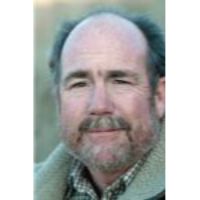
Peter Byrne is an investigative reporter and science writer based in Northern California. His popular biography, The Many Worlds of Hugh Everett III - Multiple Universes, Mutual Assured Destruction, and the Meltdown of a Nuclear Family (Oxford University Press, 2010) was followed by publication of The Everett Interpretation of Quantum Mechanics, Collected Works 1957-1980, (Princeton University Press, 2012), co-edited with philosopher of science, Jeffrey A. Barrett, of UC Irvine.
Byrne has been honored with regional and national investigative journalism awards for his reporting exposing government and corporate corruption. His science writing has been grant-funded by the Foundational Questions Institute (FQXi), National Science Foundation, and the American Institute of Physics.
He spends a lot of time camping in Death Valley, California researching a book project, The Castle in Death Valley. It is about how life forms (microbial, plant, animal, human) adapted to catastrophic climate change as the Ice receded from the valley 10,000 years ago. The book explains how inter- and intra- species cooperation based upon an ecologically resilient network of 800 springs in the valley was the key to surviving rapid desertification.
He is very stoked about being at KITP for ten weeks talking to all of the interesting people about their specialties. He is also interested in conferring with scientists about how best to address the phenomenon of science denial that is holding back human development.
Talks

Kavli Experience
By Peter Byrne
My ten weeks at Kavli were an intellectual treat. When not sleeping, I was immersed daily in the mechanics of multicellularity and the evolution of cooperation and dosed with a sprinkle of quantum system complexity. The international gathering of dozens of mathematical physicists and evolutionary biologists knocked down traditional barriers between physics and biology, even as intense debates regularly ensued between practitioners of both pursuits. And the canonical debate between kin selection and group selection advocates found many passionate expressions in both large and small gatherings. Some resolutions were reached—as both approaches were shown to be mathematically and, dare I say, philosophically, equivalent.
There were also several illuminating presentations on the intersection between quantum physics and biology, e.g. light harvesting by plants and global navigation by birds.
For a science writer, the KITP experience is bound to be priceless: to be intimately included in high level scientific discourse—without having to defend a point of view, or worry about tenure! The icing on the pi was that the visiting scientists are typically eager to explain technical or esoteric issues in accessible language.
I enjoyed interjecting liberal arts comments into the technical talks, mostly focusing upon normative and semantic issues. And I was privileged to make two presentations with fun slides, one entitled "Hype, Censorship and the Paranoid Style in Science Writing" and the other, "Writing about Quantum Mechanics for Biologists: The Many Worlds Theory".
As a direct result of the KITP experience, I am writing a story about physics and philosophy for Simons Science News. And what I learned about evolutionary biology is invaluable for researching my newest book project, "The Castle in Death Valley", which is about adaptive solutions to ecological stress developed by various life forms during the last ten thousand years in the hottest place on Earth.
I also got a few tips on some investigative journalism projects: More to be revealed.
Oh, and I suggest using a bicycle to get around the large, beautiful, beach-front campus! The students do not wear bike helmets, but, being a Darwinist, I did.